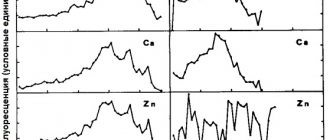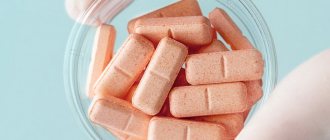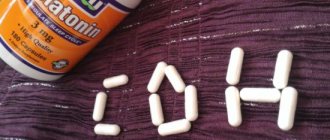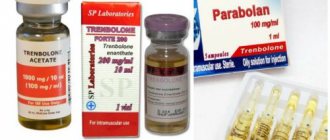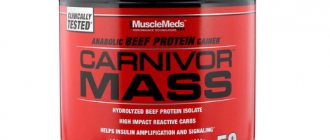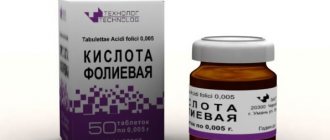The drug glutamic acid is used in medicine as a drug that improves metabolism in the brain. It is a substance for the production of other amino acids, mediators and neuropeptides, promotes the transport of Potassium ions in the brain, and is an excitatory neurotransmitter. Neutralizes and removes ammonia, increases the resistance of nerve cells to lack of oxygen. Stimulates the immune system, protects and restores liver cells (hepatoprotective effect). Read more about glutamic acid here: https://zaryad-zhizni.ru/funktsii-glutamata-i-glutamina-metabolizm/
It is used in the complex treatment of neurological and mental diseases, as well as in gynecology and gastroenterology.
Why does the body need it?
It would be more accurately called L-glutamic acid. It has long been noted in bodybuilding that the better and faster a person’s metabolism, the sooner the body will reach the standards expected by professional sports. And this amino acid is an active participant in all types of metabolism. Its effects are very diverse, it perfectly helps transmit signals along the nerves to the brain. Aminobutyric acid is formed from glutamic acid, which improves blood supply to the brain.
What kind of amino acid is this, what is L-glutamine used for, benefits and harms
This is one of the nonessential amino acids that is included in the protein molecule. Of course, in sports, the most important effect on the body will be its anabolic properties, but in addition to the creation of new cells, glutamine also contributes to:
- Improving mental processes.
- It is a powerful anti-catabolic agent.
- Promotes tissue regeneration.
- Affects the improvement of the digestion process.
- Reduces the effects of stress factors.
- Increases the synthesis of growth hormone.
- Participates in the detoxification process as an auxiliary synergist of other substances (toxins and heavy metal salts).
- Reduces the negative effects of ammonia and promotes its elimination.
- Removes the effect of overtraining.
- Reduces the accumulation of fat cells, both under the skin and in the liver.
Increased need for protein
Who knows this more than professional athletes? During intensive weight gain, they have to absorb huge amounts of protein foods, and additionally protein shakes. When they break down, an incredibly toxic substance is formed - ammonia. To prevent the body from being poisoned by it, under the influence of glutamine, ammonia is converted into urea, which is excreted naturally. Additionally, the amino acid helps stimulate the activity of the adrenal glands.
Myth or not?
Glutamine is highly valued in the bodybuilding world for a number of the above reasons. But this substance is also very often criticized. Some scientists hypothesize that this drug is useless for muscle growth and recovery.
And others, such as the American doctor John Only, went even further. He claims that glutamine harms the retina of the eye, according to studies done on rats. His assumptions were not confirmed, and a similar effect was not found in humans. But these statements did not go unnoticed; many bodybuilders, impressed by the information received, reported many negative symptoms.
Among them were severe headaches, fever, tachycardia and slow reactions. But all these reactions have not been confirmed by research. Later it became clear that this was all exaggerated by the media, but many are still wary of this supplement.
comments powered by HyperComments
PS Subscribe to blog updates,
so you don't miss anything!
I also invite you to my Instagram
Great sport and body
Below we will look at how to take glutamic acid for bodybuilding. For now, let's dwell on what this will do for your body. Glutamine is a major component of muscle tissue. Without it, its formation, if possible, is far behind in terms of timing and intensity. And this is of great importance. Imagine a person doing his best in the gym month after month, but there are no results. What will happen? Motivation will decrease sharply, and perhaps he will quit classes altogether.
Why does glutamine play such an important role in this process? Glutamine’s ability to compensate for the lack of oxygen is also valuable for an athlete. The more intense the physical activity, the more your body will feel it. Thus, a simple amino acid, which is found in many foods, helps to quickly build muscle mass, as well as restore the body after exercise.
Contraindications for use
Unfortunately, glutamine cannot be used by every athlete. The amino acid should not be taken if:
- Individual intolerance
- Feverish states
- Hepatic and/or renal dysfunctions
- Nephrotic syndrome
- Spinal cord pathologies
- Increased excitability of the nervous system
- Gastric and duodenal ulcers
- Violent manifestations of mental reactions
- Obesity.
Glutamic acid deservedly enjoys respect among athletes and bodybuilders. With the right approach, the substance helps you quickly get into the necessary athletic shape, strengthens the immune system, and reduces recovery time after injuries.
Dosage
But here everything is very individual. Obviously, it is important to consult a doctor before taking it. However, we will tell you the general scheme of how glutamic acid is used in bodybuilding. The instructions recommend consuming from 8 to 20 g of glycogen per day. In this case, the dosage greatly depends on the individual characteristics of the diet. Sometimes experienced bodybuilders increase this dose to 40 g per day, but this should be done gradually, monitoring the condition of your body.
Dicarboxylic amino acids for the athlete
Dicarboxylic amino acids are a broad concept and there are a lot of them, but basically they are glutamic and aspartic acid. Their specific gravity in the total mass of dicarboxylic acids is very large. Therefore, today we will talk about them. The products of their transformation, which, by the way, are also amino acids, are glutamine and asparagine.
Glutamic and aspartic acids are becoming more and more popular. They are produced in the form of medicines, food additives, are included in complex sports nutrition compositions, and are even produced as flavorings (glutamic acid salts). What are these two amino acids? Let's try to consider their role in the body.
There is such a thing as “integration of nitrogen metabolism in the body.” Each food product contains a different set of amino acids. At certain times, the body may lack certain amino acids, and then they are synthesized from other amino acids.
All amino acids are usually divided into two large groups: essential and essential. Nonessential amino acids are those that are capable of interconversion. Essential amino acids are arginine, cystine, tyrosine, alanine, serine, proline, glycine, aspartic acid, glutamic acid. Essential amino acids are those that are not capable of interconversion. Essential amino acids are histidine, valine, isoleucine, leucine, lysine, methionine, threonine, tryptophan, phenylalanine.
The uniqueness of glutamic and aspartic amino acids lies in the fact that in order to be mutually converted into each other, all non-essential amino acids must first be converted into glutamic or aspartic acid. That is why they say that they play an integrating role in nitrogen metabolism. However, this integrating role is not limited to just compensating for amino acids lost from food. There is also the phenomenon of “nitrogen redistribution in the body.” If there is a lack of protein in any one organ due to disease or hyperfunction (the need for working hypertrophy), a redistribution of nitrogen occurs: protein is “removed” from some internal organs and sent to others. The most common source of easily mobilized protein is blood transport proteins. When their supply is exhausted, proteins from the spleen, liver, kidneys, and intestines are used. The proteins of the heart and brain are never “wasted”, since these are the most important organs of the body.
With heavy physical activity and simultaneous restriction of protein in the diet, protein from internal organs is spent on building muscle tissue of skeletal muscles and the heart. Highly qualified athletes may develop liver and kidney diseases due to the phenomenon of nitrogen redistribution. This makes it clear how necessary it is to get a fairly large amount of protein from food.
When nitrogen is redistributed in the body, all non-essential amino acids are converted first into glutamic and aspartic acids, and then into those that are lacking in the working organ.
Glutamic acid.
The leading role in the process of nitrogen redistribution belongs to glutamic acid. Suffice it to say that glutamic acid (glutamine) makes up 25% of the total amount of all (essential and essential) amino acids in the body.
Although glutamic acid is considered a classic nonessential amino acid, in recent years it has been found that for certain tissues of the human body, glutamic acid is essential and cannot be replenished by anything else (no other amino acid).
There is a kind of “fund” of glutamic acid in the body. Glutamic acid is used first where it is needed most.
Let's try to determine the main functions of glutamic acid in the body.
- Integration of nitrogen metabolism.
- Synthesis of other amino acids, incl. and histidine.
- Ammonia neutralization.
- Biosynthesis of carbohydrates.
- Participation in the synthesis of nucleic acids
- Synthesis of folic acid (iteroylglutamic acid).
- Oxidation in brain tissue cells with the release of energy stored in the form of ATP.
- Neurotransmitter function.
- Conversion to aminobutyric acid (GABA).
- Participation in the synthesis of c-AMP, a mediator of some hormonal and neurotransmitter signals.
- Participation in the synthesis of c-GMP, which is also a mediator of hormonal and mediator signals.
- Participation in the synthesis of enzymes that carry out redox reactions (NAD).
- Participation in the synthesis of serotonin (indirect, through tryptophan).
- The ability to increase the permeability of muscle cells to potassium ions.
- Synthesis of n-aminobenzoic acid.
All amino acid substitutes, as we have already said, can be synthesized from glutamic acid. Recently, however, it has been found that glutamic acid can also be converted into some essential amino acids, in particular histidine and arginine.
Histidine is actively involved in metabolism. It takes part in the synthesis of carnosine and anserine - without protein nitrogenous substances of muscle tissue. Carnosine performs antioxidant functions and helps stabilize the cell membranes of muscle fibers. Carnosine is not able to restore the performance of an already tired muscle, however, it actively counteracts the development of fatigue in the muscle, thereby significantly increasing performance. Anserine is a derivative of carnosine and acts in a similar way.
In addition to the synthesis of carnosine and anserine, histidine improves liver function, increases gastric secretion and intestinal motor activity. This has a beneficial effect on the digestive ability of the gastrointestinal tract. Histidine is a good antiulcer agent and promotes the healing of gastrointestinal ulcers. Histidine has a good anabolic effect, increasing the release of growth hormone into the blood by the pituitary gland. Histidine improves immunity and reduces the impact of extreme factors on the body, and normalizes heart rate. In medicine it is used for peptic ulcers, gastritis, hepatitis, decreased immunity and atherosclerosis.
Arginine is an essential amino acid, especially at a young age, when its synthesis from glutamic acid is limited. It has a noticeable anabolic effect, stimulates the release of somatotropic hormone into the blood. Together with glycerol, arginine participates in the synthesis of creatine in muscles, thereby increasing muscle performance. Arginine activates the synthesis of testosterone in the body, significantly increasing sexual function in men. In large doses, arginine is used to treat impotence and to increase sperm motility.
Glutamic acid is converted to glutamine by adding an ammonia molecule. Ammonia is a highly toxic compound that is formed as a by-product of nitrogen metabolism. Ammonia makes up 80% of all nitrogen toxins. By adding ammonia, glutamic acid is converted into non-toxic glutamine, which in turn is included in amino acid metabolism. Complex sports nutrition formulations, as well as dietary supplements, use both glutamic acid and glutamine. Which one is preferable? The answer to this question is clear. Given the detoxifying effect of glutamic acid, it is preferable to glutamine. If the body needs glutamine rather than glutamic acid for some purpose, it can easily obtain it by combining glutamic acid with ammonia, since the latter is always present in excess.
Biosynthesis of carbohydrates from glutamic acid, and primarily from glucose, is an extremely important reserve mechanism for supplying the brain with glucose in the absence of carbohydrate nutrition or during very heavy physical exertion.
Glucose is the main supplier of energy for the brain and spinal cord. It is absorbed through the non-insulin route, i.e. without the participation of insulin. Without glucose, the brain dies very quickly, so the body has evolved reliable mechanisms for endogenous glucose synthesis. When there is a deficiency of glucose in the blood, the body immediately launches mechanisms for the synthesis of glucose from amino acids, fats, lactic and pyruvic acids, keto acids, alcohols, and indeed anything that comes to hand. The process of glucose synthesis in the body is called “glucaneogenesis”, i.e. "new formations" of glucose. Gluconeogenesis occurs most actively in the liver, then the kidneys and, lastly, the intestines are involved in this process. Glutamic acid is converted into glucose especially actively in the intestines. However, it is not only capable of converting into glucose itself, but also enhances the process of glucose synthesis (gluconeogenesis) from other substances in the liver and kidneys. For this ability, glutamic acid is nicknamed the gluconeogenic amino acid. In its ability to stimulate (directly or indirectly) gluconeogenesis, glutamic acid is second only to alanine. The very first emergency pathway for glucose synthesis is the use of amino acids, and here the role of glutamic acid is very high. Stimulation of gluconeogenesis leads to the utilization of lactic acid in the liver with the formation of glucose.
A single dose of glutamic acid after training can significantly reduce fatigue due to more complete utilization of lactic acid, neutralization of ammonia, the energizing function of glutamic acid, as well as for many other reasons.
Glutamic acid takes part in the biosynthesis of purine and pyrimidine nucleotides, which take part in the construction of DNA and RNA molecules. Purine and pyrimidine non-cleotides exhibit a distinct anabolic effect, especially in relation to rapidly dividing cells. Therefore, first of all, they improve hematopoiesis (hematopoietic cells divide most quickly). They exhibit a somewhat weaker anabolic effect in relation to the gastrointestinal tract. Their anabolic effect in relation to skeletal muscles is even weaker. But even if it were completely absent, purine and pyrimidine nucleotides would still have a positive effect on muscle growth, at least by improving the digestive ability of the gastrointestinal tract. By the way, yeast (baker's and brewer's) has the highest content of purine and pyrimidine nucleotides. They are now being produced as a separate dietary supplement.
Folic acid (vitamin Bc) is nothing more than pteroylglutamic acid and is synthesized naturally from glutamine. Folic acid does not act in isolation, on its own. It exhibits its vitamin activity only in combination with vitamin B12 (cyanocobolomine). The main effect of folic acid is anabolic. It significantly improves protein metabolism, activating the work of amino acids, purine and perimidine bases, as well as choline. Without folic acid, cell reproduction is impossible. Together with vitamin B12, it is found in chromosomes and regulates their division. Folic acid activates hematopoiesis, increasing the content of both red and white blood cells in the blood. In medical practice, therefore, folic acid, together with vitamin B12, is actively used to treat various types of anemia. By stimulating the synthesis of choline in the body, folic acid promotes the accumulation of lecithins in the body and reduces cholesterol levels in the body, thereby delaying the development of atherosclerosis.
Since we are talking about vitamins, it is necessary to note another vitamin that is synthesized from glutamine - n-aminobenzoic acid (para-aminobenzoic acid, or ABA for short). Initially, it was believed that para-aminobenzoic acid was just a precursor to the synthesis of folic acid. Subsequently, however, it turned out that this was not so. PABA is of great independent importance for the body. It is necessary for normal pigmentation of hair, skin, iris, etc. Pigmentation in this case depends on a special type of pigment - melanin. In recent years, it has been found that melanin performs not only pigmentation, but also adaptation and trophic functions. The highest content of melanin is noted in none other than the brain. Melanin affects the strength and mobility of nerve processes. Some authors believe that melanin can be a source for the synthesis of catecholamines - neurotransmitters of the excitatory type. In light of these studies, the appearance of gray hair can be interpreted as a result of age-related depletion of catecholamine depots. Their synthesis consumes all available melanin reserves and there is no longer enough of it for hair. Novocaine is made from para-aminobenzoic acid, which is familiar to all of us and without which it is impossible to imagine modern surgery.
Glutamic acid is one of the few compounds that, along with glucose, can serve as a good source of nutrition for the brain. This is due to its ability to be oxidized in mitochondria through the stage of formation of ketoglutaric acid with the release of energy stored in the form of ATP.
Glutamic acid is an independent neurotransmitter in a number of parts of the spinal cord and brain. This means that there are large groups of nerve cells that use glutamic acid as the only substance that transmits nerve impulses from one nerve cell to another. Basically, with its help, excitation processes are transmitted. However, due to the fact that inhibitory neurotransmitters are also formed from glutamic acid, its stimulating effect is balanced by a calming effect and, in general, it does not have any stimulating effect (with rare exceptions).
In the brain, glutamic acid is converted to gamma-aminobutyric acid (GABA), which is the main (though not the only) inhibitory neurotransmitter. GABA has a pronounced anabolic effect in relation to muscle tissue, reduces the need of body cells for oxygen by activating oxygen-free oxidation of energy substrates. GABA itself can be oxidized both in oxygen and oxygen-free ways, releasing a large amount of energy. When the body gets into an extreme state: excessive neuropsychic stress, physical overload, high or low temperature, severe infection, etc. The brain's need for oxygen increases significantly. In this case, the so-called aminobutyrate shunt is triggered. In the process of aminobutyrate shunt, large amounts of glutamic acid are converted into gamma-aminobutyric acid, and the latter already oxidizes it in the mitochondria of nerve cells, providing them with the energy they need in extreme situations. The body's ability to withstand stress is limited primarily by the energy capabilities of nerve cells. The body's need for histamic acid in such a situation increases significantly. Having neither an exciting nor an inhibitory effect, glutamic acid in the energetic aspect exhibits a very strong anti-stress effect both in relation to the central nervous system and in relation to the entire body as a whole. Glutamic acid is a kind of adaptogen in this case.
Glutamic acid takes part in the synthesis of AMP-adenosine monophosphate, which is subsequently converted into c-AMP - cyclic adenosine monophosphate. Many neurotransmitters (catecholamines) and hormones (insulin) do not penetrate into the cell, but act on surface receptors of the outer cell membrane. Metabolism in the cell changes due to the existence of an intracellular hormonal signal mediator - c-AMP. The impact on the receptors triggers the synthesis of c-AMP, and c-AMP triggers a chain of metabolic reactions inside the cell. During intense physical activity, the body first adapts by releasing more hormones and neurotransmitters into the blood. Subsequently, with repeated physical exertion, as fitness develops, the body begins to adapt and responds to the load not so much by the release of hormones and mediators, but by an increase in the intracellular synthesis of c-AMP. This is a more economical reaction, it helps to “save” the body’s hormonal and mediator reserves, saving them from depletion. Thus, through a complex transformation, glutamic acid increases the sensitivity of cells to hormonal and mediator signals. This helps the body react more accurately and more adequately to heavy physical activity and adapt to it more quickly.
Since we are talking about c-AMP, this intracellular hormonal signal mediator indirectly increases the sensitivity of cells to sex hormones, while simultaneously stimulating the release of sex hormones into the blood and increasing their content in muscle tissue. Muscle anabolism is thus significantly enhanced.
When there was no such sport as bodybuilding, glutamic acid was used as an anabolic factor to treat hereditary muscular dystrophies.
Glutamic acid can serve as a source of gluanidine monophosphate (GMP) in the body, which is then converted in the body into cyclic gluanidine monophosphate (c-GMP). C-GMP, like c-AMP, is an intracellular mediator of hormonal and mediator signals, only different ones. For example, c-GMP is an intracellular mediator of the action of acetylcholine on muscle and other cells. Acetylcholine is a neurotransmitter in those nerve cells that make up the motor centers, conduct motor impulses and transmit them directly to the muscle. Increasing the sensitivity of nerve and muscle cells to acetylcholine significantly increases muscle strength and anabolic processes in the muscle itself. Acetylcholine is also a neurotransmitter in the parasympathetic nervous system. Naturally, increasing the sensitivity of parasympathetic nervous system neurons to acetylcholine significantly increases its activity. One of the main functions of the parasympathetic nervous system is to enhance anabolic processes. This is another mechanism of the anabolic action of glutamic acid. By the way, glutamic acid enhances the synthesis of acetylcholine itself in nerve cells, but only slightly.
The energizing effect of glutamic acid is partly due to the fact that it takes part in the synthesis of NAD (nicotinanide adenine dinucleotide). NAD is a specific enzyme involved in biological oxidation processes occurring in mitochondria. In the respiratory chain (chain of redox reactions), NAD is a carrier of electrons and hydrogen ions.
Glutamic acid can be converted into the essential amino acid tryptophan. If there is a deficiency of nicotinic acid (vitamin PP) in the body, tryptophan is converted into nicotinic acid in the body and prevents the development of vitamin deficiency. Serotonin, one of the inhibitory neurotransmitters of the central nervous system, is synthesized from tryptophan. Serotonin has an anabolic effect, enhances protein synthesis in the body and, by slowing down its breakdown, serotonin activates the adrenal cortex and the release of glucocorticoid hormones into the blood during intense physical work.
Glutamic acid slightly increases the permeability of cells to potassium ions, promoting the accumulation of potassium inside the cell. For skeletal muscles this is of particular importance, because. muscle contraction requires a fairly high potassium content in the cells.
The sodium salt of glutamic acid has the taste of meat and meat broth. In some countries it is produced in huge quantities as a seasoning (Japan). The use of monosodium glutamate to impart a meaty flavor to products is growing every year. Currently, in almost all countries it is added to sausages, bouillon cubes, sauces, etc.
For medical use, glutamic acid is available in tablets of 0.25 g.
Ten years ago, glutamic acid was prescribed no more than 10 g per day for particularly severe poisoning. Now generally accepted dosages have increased to 20-25 g per day. In sports practice, glutamic acid is used in even larger doses: 30 g per day and even higher. It is non-toxic and its side effects, which theoretically may occur in practice, never occur. Such large doses may not seem large at all if we consider that every 100 g of protein food contains 25 g of glutamic acid. If an athlete eats 200 g of animal protein per day, then with this protein he receives at least 50 g of glutamic acid. But there are highly qualified athletes who eat up to 500 g of protein per day, receiving 125 g of glutamic acid from food alone. If we open a pharmacy package with glutamic acid tablets, we will see instructions there, according to which it is necessary to take glutamic acid, 1 tablet 3 times a day. per day (0.75 g per day). It would be funny if it weren't so sad.
Even in some literary publications devoted to sports, you can still find recommendations for weightlifters to take glutamic acid 2 tablets 3 times a day (1.5 g per day).
Just think about it! Athletes weighing 120 kg, eating several hundred grams of protein and receiving up to 100 g of glutamic acid per day with food alone, “in order to improve amino acid metabolism,” should take it in tablets of 1.5 g per day. This is ridiculous.
Real dosages of pure glutamic acid should be commensurate with food intake and not far behind them. Medical dosages of glutamic acid, which have existed unchanged since 1962, should, of course, be revised upward.
Aspartic acid
Aspartic acid does not have such a large specific gravity in the body as glutamic acid (although, incidentally, all other existing amino acids) do not have such a large specific gravity in the body.
In addition to the redistribution of nitrogen in the body, along with glutamic acid, aspartic acid takes part in the neutralization of ammonia.
Firstly, aspartic acid is capable of attaching a toxic ammonia molecule to itself, turning into non-toxic asparagine. And, secondly, aspartic acid helps convert ammonia into non-toxic urea, which is then excreted from the body.
Aspartic acid is capable of entering into glucolneogenesis reactions and being converted into glucose in the liver, which is of great importance during volume physical exercise.
Aspartic acid takes part in the biosynthesis of carnosine and anserine, in the synthesis of purine and pyrimidine nucleotides.
Aspartic acid, like glutamic acid, itself is capable of oxidation in the mitochondria of the brain with the release of energy stored in the form of ATP. In principle, all amino acids can serve as a source of energy for the central nervous system, but glutamic and aspartic acids play a special role. They are the best suppliers of energy for the brain.
A remarkable ability of aspartic acid is its ability to increase the permeability of cell membranes to potassium and magnesium ions. For this purpose, potassium and magnesium salts of aspartic acid are produced. Aspartic acid “pushes potassium and magnesium into the cell. Other amino acids do not have this ability, with the exception of histamic acid, which can slightly increase the permeability of cell membranes to potassium ions. By “dragging” potassium and magnesium ions into the cell, aspartic acid itself is included in intracellular metabolism. As a result of taking potassium and magnesium aspartic acid, physical endurance significantly increases. These aspartic acid derivatives have a particularly beneficial effect on the heart muscle. In order to understand the positive effect of aspartic acid salts on muscles (including the heart), we need to take a closer look at the operation of the potassium-sodium pump.
Every cell of the body - muscle, nerve, nerve fibers, etc. has a certain membrane potential. Membrane potential is the potential difference between the extracellular and intracellular environment. Inside the cell, potassium ions predominate, and outside the cell, in the extracellular space, sodium ions predominate. Each cell has a negative charge in relation to the external (extracellular) environment. Its magnitude varies in different cells. But this is not the point. When a nerve cell is excited, potassium ions rush out and sodium ions rush into the cell. As a result, depolarization of the cell membrane occurs. The cell becomes excited and generates an action potential that is transmitted to other nearby cells. For example, the process of excitation is transmitted between nerve cells and this is how a nerve impulse travels along a nerve fiber.
To return to a state of rest, the cell again needs potassium ions. Potassium rushes into the cell, and sodium leaves the cell. The cell regains its resting potential. The mechanism described above is called the “potassium-sodium pump”. If there is sufficient presence of potassium ions inside the cell, its resting potential can become even higher than the original one. Hyperpolarization of the cell membrane occurs. The cell acquires increased resistance to disturbing external influences.
The heart muscle is excited very easily for a variety of reasons. With age, when cell membranes begin to age, this excitability increases even more. Cardiac arrhythmias begin, so to speak, excessive uncontrolled contractions of the heart muscle, which can sometimes even lead to death. Highly qualified athletes, whose heart is constantly exposed to the stimulating effect of adrenaline and norepinephrine, are especially susceptible to cardiac arrhythmias. They cause too frequent working depolarization of cardiac muscle cells, which do not have time to restore their normal resting potential.
Potassium aspartate penetrates into the cell and restores the impaired resting potential. This is facilitated by magnesium ions introduced into the cell with magnesium aspartate. For medical purposes, mixtures of potassium and magnesium salts of aspartic acid are produced.
In our country, a drug called “Asparkan” is produced. Available in tablets, each of which contains 0.175 potassium aspartate and 0.175 magnesium aspartate. If you calculate the content of pure potassium and pure magnesium, it turns out that each tablet contains 36.2 mg of potassium ion and 11.8 mg of magnesium ion.
In sports practice, Asparkan is used in fairly large doses: from 18 to 30 g per day. But these doses will not seem so large to you if you consider that the daily need of an adult body for potassium is 3-5 g, and the daily need for magnesium is at least 400 mg. Currently, there is a tendency to increase the daily dosages of potassium and magnesium aspartate to very large values. The amount of potassium and magnesium introduced into the body should be commensurate with the amount that enters the body with food. An excess of aspartic acid cannot arise, if only because this excess is simply converted into glucose.
There are many dicarboxylic amino acids. Today we talked about two “main” dicarboxylic acids, whose role in the body is universal and unique. Glutamic and aspartic acids cannot be replaced by anything.
Different dosage regimens
Since all athletes are different, the method of administration will also be different. Moreover, it may be difficult for an inexperienced bodybuilder to find the optimal scheme, so it is best to contact a professional trainer. However, our task is to tell you how glutamic acid is used in bodybuilding. Instructions for use recommend that beginners take a little at a time over 2 minutes. It is this method that ensures the most complete absorption by the muscles.
On days of increased sports activity, the body requires increased nutrition and oxygen supply. Therefore, it is recommended to take glutamine before entering the gym and after training. It is usually recommended to take 5-20 g at a time for the drug to have the greatest effect.
It is very important to take the amino acid with plenty of liquid. Experienced trainers recommend taking it with a protein shake or simply with food. But you shouldn’t mix it with other amino acids; you need at least a temporary break.
Side effects of glutamic acid
Glutamine deservedly enjoys prestige among athletes, since it not only helps in strengthening and building muscles, but is also well tolerated by most of them. But, like any chemical substance, an amino acid can provoke a negative reaction in the body. The main symptoms of drug rejection appear as:
- Nausea (with or without vomiting)
- Diarrhea
- Excitation of the central nervous system
- Increased nervous excitability
- Abdominal pain.
If side effects occur, it is recommended to reduce the dosage of the drug, and then, if necessary, you must return to the previous regimen. If reducing the dose does not help, and the body continues to react negatively to the medicine, you should definitely see a doctor.
If you take glutamic acid for too long, without taking breaks between courses, the patient experiences:
- Decreased hemoglobin levels
- Decrease in the number of leukocytes in the blood
- Irritation of the mucous tissues in the mouth
- Cracking of the skin of the lips.
Increased dosage
If an athlete decides to dry out his body and at the same time gain muscle mass, then it is necessary to change the dosage. Typically, a low-carbohydrate diet is followed during this period. Therefore, the trainer prescribes a minimum of 30 g of glutamine per day to avoid muscle catabolism. That is, if the body does not have enough carbohydrates, it will begin to suck amino acids from your muscles. No growth or strengthening is possible in this case. One more interesting fact should be noted. Taking 20-40 g of glutamine daily helps activate the immune system. Doctors established this using the example of patients who received bone marrow transplants. And for athletes under high loads, good immunity will come in handy.
Judging by the reviews of experienced athletes, taking this amino acid in the correct dosage helps to significantly increase the capabilities of your body and quickly achieve your goals. As an experiment, a training cycle was carried out more than once, pre-agreed in time. At the same time, several people pumped as usual, while others took glutamic acid. As a result, it was obvious that in the second case all indicators were significantly ahead. In addition, athletes demonstrate increased performance and well-being.
general characteristics
In the human body, glutamine is the most common amino acid - accounting for almost 20 percent of the total group of substances. More than 60 percent of the body's muscles are made from this amino acid. And given that 19% of its composition is nitrogen, it is the main supplier of nitrogen compounds.
Our body uses glutamine to create proteins called amino sugars, which in turn are needed to fight osteoarthritis. Also important for glutathione production.
It has been proven that glutamine has a positive effect on the growth process and supports the immune system. And its ability to have a beneficial effect on muscle tissue makes it an extremely popular sports nutrition supplement among bodybuilders. And the “talent” of this amino acid to retain moisture in tissues is used by bodybuilders to maintain muscle volume and relief. In addition, glutamine prevents muscle catabolism and helps the body recover faster during sleep. Having antioxidant properties, glutamine protects a person from free radicals, and also prevents degenerative neurological diseases, in particular Alzheimer's and Parkinson's. But when the body is attacked by infections or recovering from injuries, the concentration of glutamine decreases by almost 2 times, causing symptoms of chronic fatigue.



